Text
Solarpunk Sunday Suggestion
Go for a walk in the woods
111 notes
·
View notes
Text
Here’s a quick and comprehensive video of how I made paper 📝
14K notes
·
View notes
Note
I thought green onions/Alliums were nitrogen fixers, but google is telling me no, is this true?
Unfortunately, Google is right in this case - onions/Alliums aren’t nitrogen fixers. In fact, planting them near nitrogen fixers can actually keep the nitrogen fixers from putting nitrogen back into the soil. That’s because the nitrogen-fixing process relies on a bacteria that can pull nitrogen out of a plant’s roots and into the soil, and Alliums’ mild antibacterial/antimicrobial properties kill off those bacteria. They also require a lot of nutrients in general to grow (although the root/bulb-based Alliums more so than green onions), so they’re actually likely to deplete nitrogen in the soil.
If you’re interested in learning more about nitrogen fixers, this article has a big list of nitrogen-fixing plants, and this article talks more about the science behind nitrogen fixing in general. I hope this helps!
- Mod J
195 notes
·
View notes
Text

New art!!!! I’ve been getting back into graphic design recently! 2024 is going to be my draw whatever I want without stressing era (I will probably stress)
2K notes
·
View notes
Note
hi! i love your blog :D do you have any advice to implement low waste and solarpunk aspects into everyday life with a tight budget? keep doing what you do!
Hi!
Thanks for asking - I’ve had this question before and it’s definitely a real problem. Organic, plastic free food is expensive. So is handmade durable clothing, and train fares these days. It can feel like only the rich can be solarpunks, which is pretty counterintuitive given its anticapitalist ideology. But! I’m here to tell you there’s lots you can do to bring solarpunk into your life in a cost-effective way.
To start with, lots of solarpunk spaces are free or cheap. Get a library card and you can borrow as many books and DVDs and other resources as you like. Look up to see if there’s a library of things in your neighbourhood, and join a buy nothing or stuff for free group online. Download TooGoodToGo, which lets you access food from local cafes and restaurants which would otherwise go to waste. See if there’s a repair cafe that operates near you - I managed to get a pair of trousers mended at one of these for free, and I had been thinking I would need to pay a tailor (which is fine if you can afford it! Skilled labour deserves fair wages!). In some places plant-based food is cheaper, so when it is, choose it. But in others it will cost more than animal products so you have to decide on a case by case basis whether saving money or a particular diet is more important to you.
There’s lots else you can do for minimal spending or that actually saves you money. Walking to work or school avoids the expenditure in the petrol for a drive or a bus fare. If you’re within walking distance and able to do so, I’d recommend it. Joining your local chapter of Extinction Rebellion, Friends of The Earth, Greenpeace, The A22 network or any other active climate group in your area is almost always free and just involves a small weekly time commitment. This will introduce you to activists and inform you about protests and public meetings you can attend.
If you have the time in your week and the physical ability, which I acknowledge many people don’t, you can also join some sort of volunteer group looking after a nature reserve or tending a community garden (which might also give you access to free or discounted food). Learning to forage is also a good skill as that really is free food!
Depending on where you are, a green electricity tariff *can* also be less expensive. If this is the case and you have control over your provider, it’s worth switching to it. Buying books and clothes secondhand will also be better for the environment and your bank balance. Teaching yourself about the climate and the natural world with podcasts, YouTube, online free articles and other resources is also free and the knowledge will help you keep solarpunk at the front of your mind. Read good news stories online whenever you can, to remind you that good things are happening already.
If you’re employed, you can also try to influence green policy at your workplace or in your trade union. If you’re at school or university, joining (or setting up!) the environmental society and/or lobbying for change at the SU are both good ideas and shouldn’t necessarily cost you anything. If you can - and I know this is inaccessible for a big swathe of the population - put a very small amount of money aside whenever possible, because the more you save the more you can afford to buy better products, donate to causes, help out the needy in your community, travel in a greener way, and other more expensive choices. It’s all about that dual power.
Hope this helps get you started!
271 notes
·
View notes
Note
saw your posts with anons asking about non-gardening things to do that are solarpunk. one thing i've been focusing on recently is recycling old technology! a lot of people feel like the super tech-heavy solarpunk projects are unattainable, but they're actually pretty easy with some research! youtube channels like "DIY perks" have tutorials on how to repurpose pieces of old laptops and cell phones. don't let your old iphone rot in a drawer- donate it to a homeless shelter or use the screen to make a cool lamp ✌️
Excellent points, thanks for sending this in!
For other followers who may be interested in dabbing in solarpunk tech stuff, if there's a Repair Cafe or some kind of "maker space" near you, they often have tools and/or people who know what they're doing for additional help.
- Mod J
133 notes
·
View notes
Text
38K notes
·
View notes
Text
Solarpunk Sunday Suggestion
Host a clothing swap
97 notes
·
View notes
Text
One of the things I think about a lot is productivity comparisons between conventional and unconventional agriculture. Mostly because that's the first question you get asked when you talk about anything that's outside the norm*, but, on what metric are we measuring? Per acre? Per hour worked? Per cost of input? Are we measuring yields of product or dollars earned?
This question also, to me, rings of fear. Fear of food shortages, which are really a problem of greed & distribution, not the world's capacity to grow food. If we were really worried about calories though, I think we'd at least switch to pastured animals instead of sending so much corn and soy to livestock (for any non-farmers out there, you do not get nearly the calories out of a chicken or pig that you put in- you get much less**). Or we would put more effort into making cities great places to live so we stopped turning farmland into suburbia. Or we would be much more concerned with how to prevent erosion & loss of arable land. But we don't, and we're not.
I also think of the complexity of non- conventional farming, and how instead of it being a return to the past, it actually relies on new information and methods***.
Take the plot of land that I'm working to make into a market garden. It's soil is, from a farmer's perspective, crap. It's gravely, sandy, very little organic matter. If I were to farm it conventionally, I'd basically have till to open the soil and kill weeds, and then provide all of the plant nutrients through fertilizers, which would cause the plants to kick out their symbiotic fungi, leaving them vulnerable to pathogenic fungi, and more dependant on me for water. There would also be bare soil everywhere, increasing evaporation & providing plenty of opportunities for new weeds. My costs would be very high, paying for fertilizers, pesticides, & herbicides, and I would have to water, a lot. It probably wouldn't be at all economically feasible to grow food on this plot using conventional methods.
Now, I look at it and say, I'm going to do no-till. I look at the hard, weedy, depleted soil and there's no way a seed is going to be able to come up through that. But, I'm not just doing no-till, because I'm not looking at it from a conventional mindset and just trading out one practice. I'm doing basically everything different from above.
Instead of tilling, I'm laying down a thick layer of mulch, to shade out the weeds, increase soil organic matter (increasing the amount of water and nutrients the soil can absorb & good on to), and feed the soil ecosystem. By the time spring rolls around, the soil underneath will be much better, but I'll still add more compost in most cases.
Instead of fertilizers I've had to pay for, I'm using mulches that I got for free from my gardening work & composts made for free from restaurant kitchen wastes****. I'm going to use over crops, plants that fix nitrogen and also serve as perennial hosts to beneficial soil fungi, which will also form symbiosis with most of my crops, increasing their resistance to pathogenic fungi while also providing them with increased access to water and soil minerals.
Instead of bare soil, there will be mulches and cover crops every where. Instead of monocrops & pesticides, I'll be intercropping which will help by hosting beneficial native insects that will chow down on aphids and other crop pests.
From this framework, there's an upfront investment of effort and planning, but farming this land now seems feasible.
And the thing is, each of those choices is backed up by research. We know so much more now about soil and nutrient cycling and how it actually works than when conventional ag really got started. We know so much more, and so many practices are new, so growing non-conventionally isn't a step back into the past of how things were grown.
But at the same time, it's not exactly completely information either- other cultures have different ways of growing food crops, and if you broaden your concept of what cultivating plants looks like, there's examples everywhere. We're just studying it now and providing it scientifically.
*and I honestly think that it's a result of the extractive mindframe that comes from being the decendants of colonizers. Just look at the different perspectives between many western foragers ideas and Indigenous peoples' relationship with the land.
** chickens are one of the most efficient, with a feed conversion ratio of 1.6, which means for every 1.6 pounds of food you give them, you can expect the chicken to gain 1 pound (cows are over 4 pounds of feed to pound of live weight, and pigs are 3 to 4ish). That's the whole bird though, counting all the parts we don't eat- guts, feathers, bones, etc. Even so, a pound of chicken food has over 1300 calories, and is about 20% protein for starter/grower, where as a pound of chicken has about 500 calories and about 30% protein (for dark meat, you get fewer calories from white meat). I'm not saying everyone should give up meat, but I am saying that the amount of meat in mainstream diets has increased dramatically, much of it comes from cafos where animals are fed on grains & legumes, and if we're measuring productivity and yield per acre because we're worried about feeding the world, this is a huge factor. Look up how much of the corn & soy crop goes to actually directly feeding people.
*** from a western, colonizing prospective
**** is this a particular boon from my particular circumstances? Yes. But everyone has their own challenges and resources, there is no cookie-cutter solution to all agriculture, everywhere. You have to find the solutions that work for you.
781 notes
·
View notes
Text



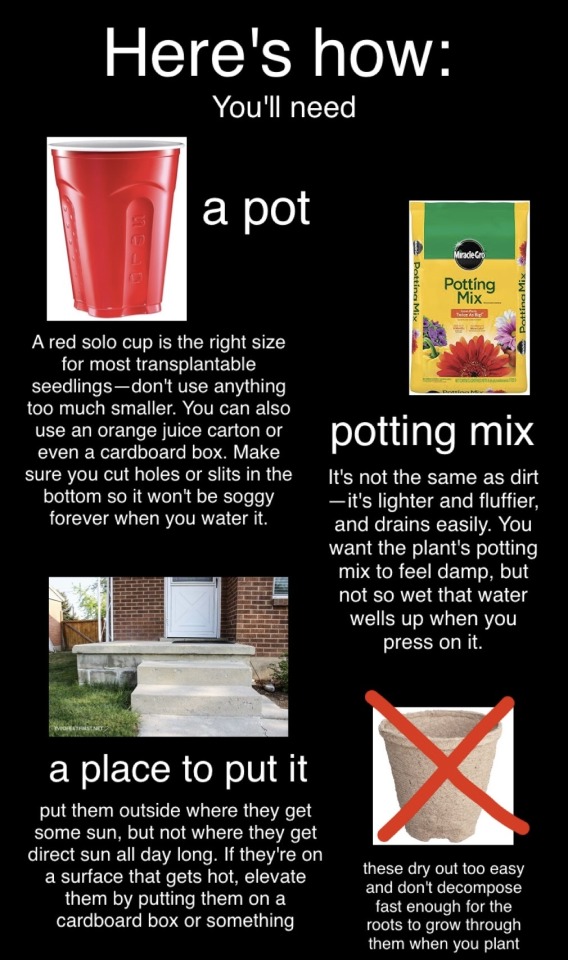





as promised, the transplanting tutorial
most sources make transplanting sound incredibly difficult, but transplanting young seedlings from areas with sparse dirt, like a driveway or roadside, is actually incredibly easy and can get you some great stuff. Once I worked out the method, i've had a very high survival rate
it took me like a month of trial and error to figure this out so you don't have to.
Feel free to repost, no need for credit
28K notes
·
View notes
Text
Un-Actions, or Restriction of Activities
This is my first post in a series I’ll be making on how to increase biodiversity on a budget! I’m not an expert--just an enthusiast--but I hope something you find here helps!
There’s a good handful of ways you can help increase biodiversity in your yard that don’t require buying things--in fact, these may actually help you save money in the long run! They may seem small and simple, but every bit counts! Whether you can do these in totality, or just limit how often you do these actions, it’ll make a difference.
Not Mowing, or Mowing Less Often

Turf grass lawns are considered a monoculture, meaning they don’t provide much opportunity for insects to find habitat--so few other creatures find them enjoyable either. An expanse of turf grass is, in many ways, a barren wasteland in the eyes of wildlife--too exposed to cross, with few to no opportunities for food or shelter, leaving them exposed to blazing hot sun, freezing cold, or any predators that may be lurking nearby. A place to be avoided. The simple act of letting your grass grow unbothered gives a chance for wildflowers to grow, and for your grass to grow taller--providing more habitat for insects, which then provides more habitat to birds and other creatures that feed on said insects. Wildlife want nothing more than to skirt by unnoticed, so even leaving the grass tall along the edges of a fence or yard can help a little. Even restricting mowing to every other week, or at a higher blade setting, can be a huge help. If HOAs or city ordinances are fussy about lawn length in the front yard, you can likely still keep grass higher in the backyard. Or, you can create a ‘feature’ where grass is allowed to grow long in a specific area. If it looks purposeful, people are more likely to accept it. Not mowing under trees or close to shrubs not only leaves space for wildflowers to grow, but also means you don’t have to deal with mowing over bumpy roots and other difficulties. Cutting different areas at different times can be an option for letting grass grow long in some areas while still having available places for play and entertainment. I’ve seen some people plant flower bulbs when pulling up weeds, so in the future they'll bloom in early spring before mowing is usually necessary. This could be another fun way of adding biodiversity to a lawn without--or before you--begin mowing in spring.
Not worrying about mowing, or doing it less often, saves you in time, money, and energy. You won’t have to buy as much gasoline for your mower, and Saturday afternoons can be free to be enjoyed in other ways aside from being sticky and sweaty and covered in grass stains. In addition, you’ll likely be lowering your own carbon emissions!
If you do have to mow your lawn, I’ve got ways you can use your grass clippings to boost biodiversity later in the post series!
Not using pesticides, herbicides, fungicides, etc.
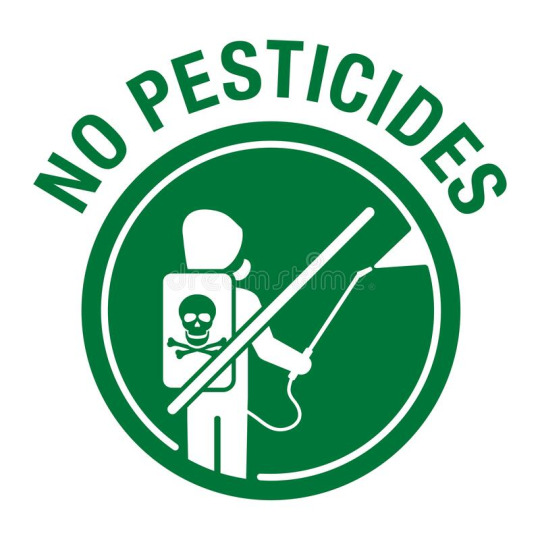
One of the next-biggest non-actions you can do asides from not mowing is using fewer fewer to no herbicides, fungicides, and pesticides in your yard. This’ll easily allow for more biodiversity. Allowing more insects and a wide array of plants to thrive will feed back into the entire food chain in your area. In addition, these types of chemicals have been tied to algae blooms, death of beneficial insects, harm to birds, fish, and even humans. Soil is supposed to be full of fungi, especially fungal mycelium that essentially acts as a network for plants to communicate, share nutrients, and support each other--fungicide kills that, and typically makes all other lawn problems even worse in a negative feedback loop. It may take awhile to see the benefits of avoiding these chemicals, but once you see it, it really is astounding.
However! I can’t lie and say that there haven’t been points where I needed to use pesticides at some points in my gardening journey. In these cases, try to use products that are organic--like diatomaceous earth, neem oil, etc--and use them accurately, correctly, and sparingly. Follow instructions on how to apply them safely and responsibly--for example, on non-windy days and during times when bees and other pollinators aren’t likely to be out and about. With some pests (read: oleander aphids, in my experience), a simple jetstream of water is enough to force them off the plant where they’ll be too weak to get back. Eventually, you should have a balanced enough ecosystem that no one insect pest causes a major issue with the work you’re doing to boost biodiversity.
If you can bear to, try handling pests manually. Squishing pest bugs in your hand is a pretty foolproof way to get rid of some problems, or spraying them with a mix of soap and water can do the trick on some insects. Alternatively, picking them off your plants and into a bucket of soapy water is also a valid option. You’ve heard of baptism by fire, now get ready for… baptism by soap?
But also! Try reconsidering what you consider a pest! Tomato hornworms are hated by gardeners, for devouring the foliage of beloved tomato, pepper, and potato plants. But killing the tomato and tobacco hornworm means getting rid of sphinx moths, also known as hummingbird or hawk moths! Hawk moths are vital to the survival of many native plants, and are sometimes even the only species that pollinates them. If you can bear to, consider sacrificing a few tomato plants, or growing a few extras, so we can continue having these beautiful moths for years to come. After all, they may not even do significant damage to the plants!

With that in mind, be friendly to your natural pest managers! Lacewings, ladybugs, praying mantises, wasps, birds, bats, and more will help manage pest populations in your environment! Encourage them by planting things they like, providing habitat, and leaving them be to do their work! Avoiding pesticides helps make your garden a livable environment for them, too!
Letting Weeds Grow
Many of the plants we know as 'weeds' are actually secondary succession species and native wildflowers. Milkweed was regarded as a noxious, annoying weed for a long time, and now people are actively trying to plant them after learning about the important role they play in our environments! Weeds are adapted to take over areas that have been cleared out of other plants after a disaster, so they're doing much of the initial work in making a habitat for other creatures. In fact, many of them will simply die back as the environment repairs itself.
An important thing to note is to please make sure that your ‘weeds’ are not invasive species. Work on learning how to identify native and invasive species in your area, and pull out what’s harmful to leave room for what’s good!
Don’t Rake (Or At Least Don’t Bag Your Leaves)

Many insects overwinter in piles of leaves that we often rake away and bag up in the fall and winter. By doing this, we are actively throwing away the biodiversity of our neighborhoods! If you can, leave the leaves where they fall!
If you do need to rake, put the leaves in places wildlife can still access it instead of bagging it up. Move your leaves into garden beds to serve as mulch, or along the edge of fences to rest while keeping egg cases and hiding bugs intact and free to release come spring.
Leave Snags Where They Are
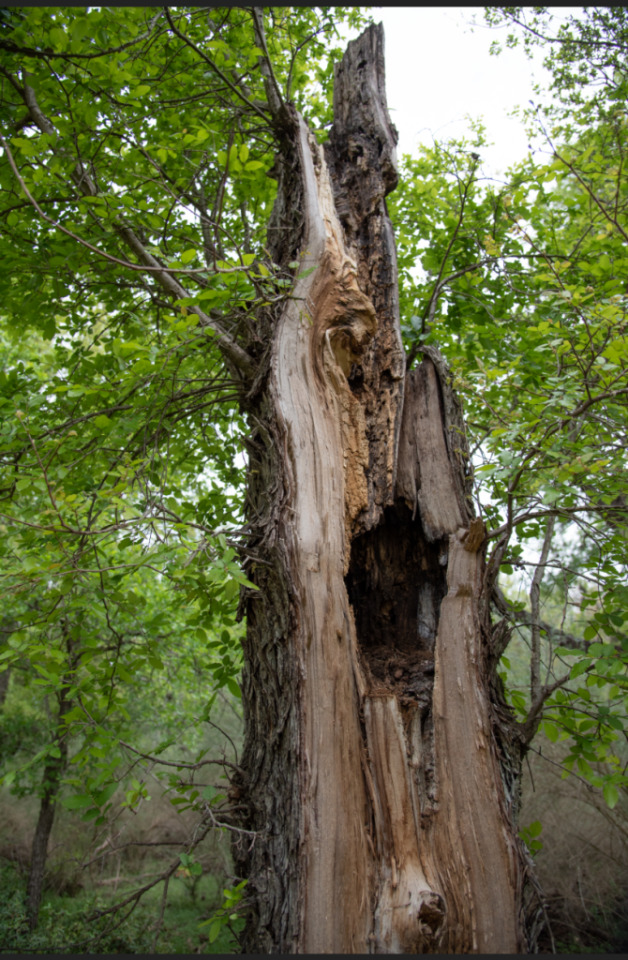
Snags are dead trees/dead branches on living trees. They provide an important wildlife habitat--many birds nest in them, or use them to seek cover from rain, and many insects will also live in snags (making them an additional food source for birds and other creatures). Tree cavities are used as nests by hundreds of bird species in the US, and many mammals use them as well, such as bats, squirrels, raccoons, and sometimes even bears. Some trees form cavities while they’re still alive, but in conifers they’re more likely to form after death. Crevices between the trunk of a dead tree and its peeling bark provide sun protection for bats and amphibians, and leafless branches make great perching areas for birds of prey to hunt from above. The decaying wood is home to insects and fungi, who then feed birds, mammals, amphibians, and reptiles. Do check on the snags regularly to ensure they don’t serve a threat to any nearby structures, but whenever possible, leave them be!
Keep Your Cat Inside
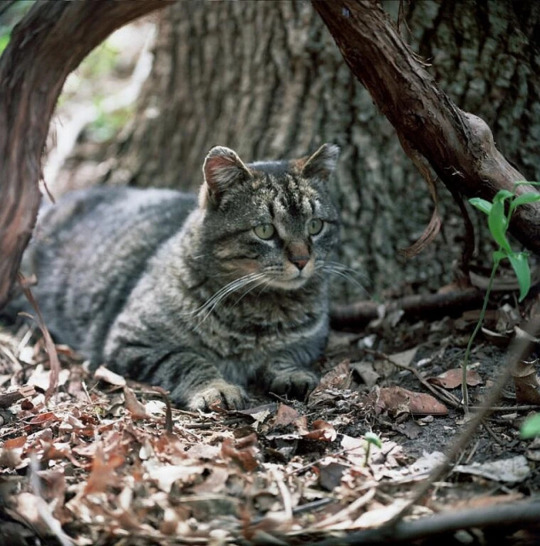
If you have an outdoor cat, consider making the adjustments to have it be an indoor cat. If you have an indoor cat, keep it as an indoor cat. Free ranging cats impact biodiversity through predation, fear effects, competition for resources, disease, and more. Keeping little Mittens inside does a lot more to help than it may seem from the outside.
That’s the end of this post! My next one’s gonna be on things you can add to your space that aren’t directly related to growing plants. For now, I hope this advice helps! Feel free to reply with any questions, success stories, or anything you think I may have forgotten to add in!
1K notes
·
View notes
Text
Things to Do that Aren't Related to Growing Plants
This is my second post in a series I’ll be making on how to increase biodiversity on a budget! I’m not an expert--just an enthusiast--but I hope something you find here helps!
Some of us just don’t have much luck when it comes to growing plants. Some of us simply want to aim for other ways to help that don’t involve putting on gardening gloves. Maybe you've already got a garden, but you want to do more. No problem! There’s a couple of options you can look into that’ll help attract wildlife in your area without even having to bring out any shovels!
Provide a Water Source
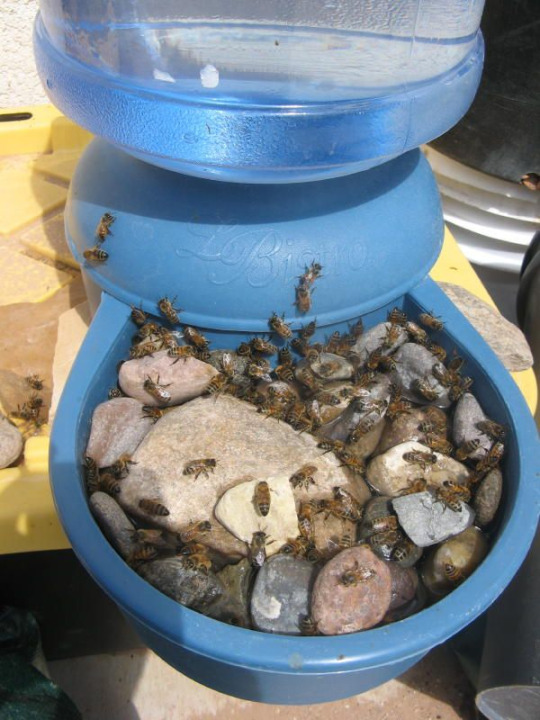
Oftentimes when I see ‘add a water source’ in informational articles about improving your backyard for wildlife, it’s almost always followed by an image of a gorgeous backyard pond with a waterfall and rock lining that looks expensive to set up, difficult to maintain, and overall just… not feasible for me. Arguably, not feasible for a lot of people. And that’s okay! There’s still ways to add water in your garden for all kinds of creatures to enjoy!
There’s tons of ways to create watering stations for insects like bees and butterflies. A self refilling dog bowl can work wonders! Add some stones into the receiving tray for insects to land on or use to climb out, and you’ve got a wonderful drinking spot for all kinds of insects! You can also fill a saucer or other dish with small stones and fill it, though it’ll likely need refilling daily or even several times a day during hot times.
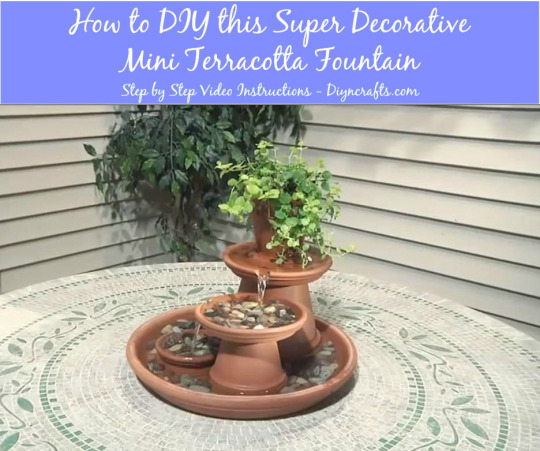
I've seen people online use all kinds of things to make water features. Some go with terra-cotta pots, pebbles, and a cheap pump to get a small and simple fountain. Others use old tires, clay, and a hole in the ground to create an in-ground mini pond system. If all else fails, even a bucket or watertight box with a few plants in it can do the trick--though do be wary of mosquitoes if the water isn’t moving. In situations like these, a solar-powered fountain pump or bubbler are great for keeping the water moving while still making it a drinking option for wildlife (it not even more appealing for some)--and these items can be obtained fairly cheap online!
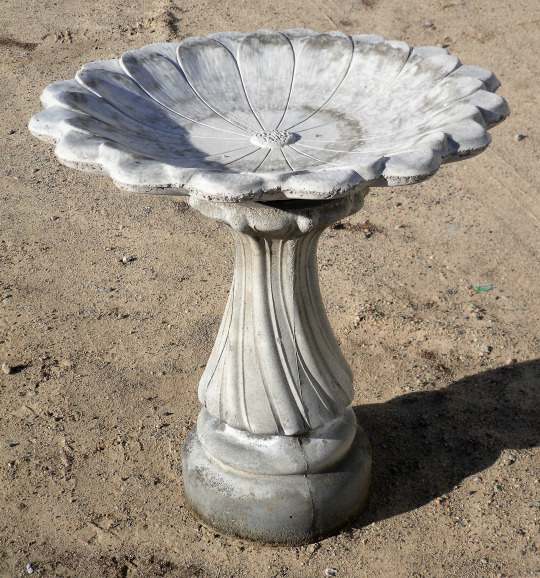
Bird baths are an option as well--a classic way to provide for birds in your area, they can be easy to find online or in a gardening store! The only downside is that a good, quality bird bath can be pricey up-front. However, a nice stone bird bath should last a long time, be easy to clean and refill, and be enjoyed by many birds! I’ve also seen tutorials on how to make your own with quickcrete! Bird baths will be a welcome sight to birds, as they provide a space for them to drink and bathe to regulate the oils in their feathers for flight and insulation. Putting a stone in the middle will also help insects to escape if they fall in, and provide a place to perch so they can get their own drink. You’ll want to change the water and clean the baths regularly--as often as once a week, if you can manage it.
If possible, it’s highly encouraged to fill and refill water features with rainwater instead of tap water. Tap water is often treated, so instead of using hoses or indoor kitchen water, collecting some rainwater is a great alternative. Collecting rainwater can be as simple as leaving cups, bins, or pots outside for awhile.
Butterflies and other creatures will also drink from mud puddles. If you can maintain an area of damp soil mixed with a small amount of salt or wood ash, this can be fantastic for them! Some plants also excel at storing water within their leaves and flowers (bromeliads come to mind), making them an excellent habitat for amphibians as well as a drinking spot for insects and birds.
Bird Feeders and Bird Houses

Some of the fancy, decorated bird feeders are expensive, but others can be pretty low-cost--I got my bird feeder from Lowe’s for around 10 dollars, and a big bag of birdseed was around another 10 dollars and has lasted several refills! If you don’t mind occasionally buying more birdseed, a single birdfeeder can do a lot to attract and support local birds! If you’re handy, have some spare wood, and have or can borrow some tools, you may even be able to find instructions online to make your own feeder. You may not even need wood to do so! Even hummingbird feeders, I’ve found, are quick to attract them, as long as you keep them stocked up on fresh sugar water in the spring and summer!
An important note with bird feeders is that you have to make sure you can clean them regularly. Otherwise, they may become a vector for disease, and we want to avoid causing harm whenever possible. Also keep an ear out and track if there’s known outbreaks of bird diseases in your area. If local birding societies and scientists are advising you take your birdfeeders down for awhile, by all means, do it!

Bird houses are naturally paired with bird feeders as biodiversity promoters for backyard spaces, and it makes sense. Having bird houses suited to birds in your area promotes them to breed, raise their young, disperse seeds, and generally engage in your surrounding environment. Setting them up takes careful selection or construction, preparation, and some patience, but sooner or later you might get some little homemakers! Keep in mind, you will need to clean your birdhouses at least once a year (if not once per brood) to make sure they’re ready and safe for birds year after year--you wouldn’t want to promote disease and parasites, after all. But they could be a valuable option for your landscape, whether you purchase one or construct your own!
Again, do make sure you're putting up the right kind of boxes for the right kinds of birds. Bluebird boxes are some I see sold most commonly, but in my area I believe they're not even all that common--a nesting box for cardinals or chickadees would be far more likely to see success here! And some birds don't even nest in boxes--robins and some other birds are more likely to use a nesting shelf, instead! Research what birds live in your area, take note of any you see around already, and pick a few target species to make homes for!
Solitary Bee Houses

A bee house or bee hotel is a fantastic way to support the solitary bees in your area! For a few dollars and some annual cleaning, you can buy a solitary bee house from most big box nurseries. Alternatively, you can make one at home, with an array of materials you may already have lying around! You can even make them so that they’ll benefit all kinds of insects, and not necessarily just bees.
Though you don’t even necessarily have to break out the hammer and nails, buy a ton of bricks, or borrow a staple gun. Making homes for tunneling bees can be as simple as drilling holes in a log and erecting it, or drilling holes in stumps and dead trees on your property. You might even attract some woodpeckers by doing this!
Providing Nesting Area
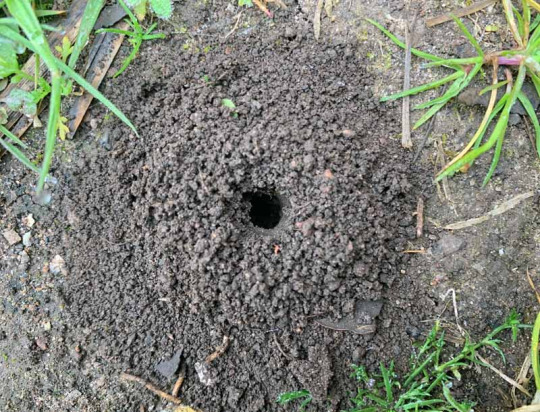
There are tons of different kinds of bees, and they all make different kinds of homes for themselves. Not all of them make big cavity hives like honey bees, or will utilize a solitary bee house. Bumblebees live in social hives underground, particularly in abandoned holes made by rodents--some others nest in abandoned bird nests, or cavities like hollow logs, spaces between rocks, compost piles, or unoccupied birdhouses. Borer, Ground, and Miner bees dig into bare, dry soil to create their nests. Sparsely-vegetated patches of soil in well-drained areas are great places to find them making their nests, so providing a similar habitat somewhere in the garden can encourage them to come! I do talk later in this document about mulching bare soil in a garden--however, leaving soil in sunny areas and south-facing slopes bare provides optimal ground nesting habitat. Some species prefer to nest at the base of plants, or loose sandy soil, or smooth-packed and flat bare ground. They’ve also been known to take advantage of soil piles, knocked over tree roots, wheel ruts in farm roads, baseball diamonds and golf course sand traps. You can create nesting ground by digging ditches or creating nesting mounds in well-drained, open, sunny areas with sandy or silty soil. However, artificially constructed ground nests may only have limited success.
Providing Alternative Pollinator Foods
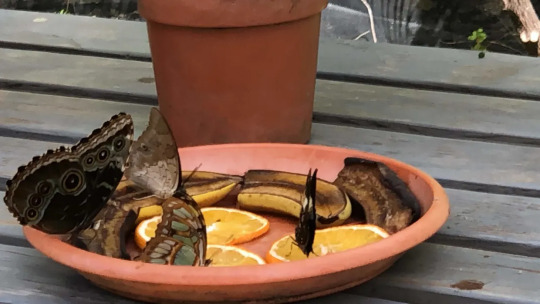
Nectar and pollen aren’t the only foods sought out by some pollinators! Some species of butterflies are known to flock to overripe fruit or honey water, so setting these out can be an excellent way to provide food to wildlife. You may want to be cautious about how you set these out, otherwise it can help other wildlife, like ants or raccoons. Butterflies may also drop by to visit a sponge in a dish of lightly salted water.
Bat Houses and Boxes
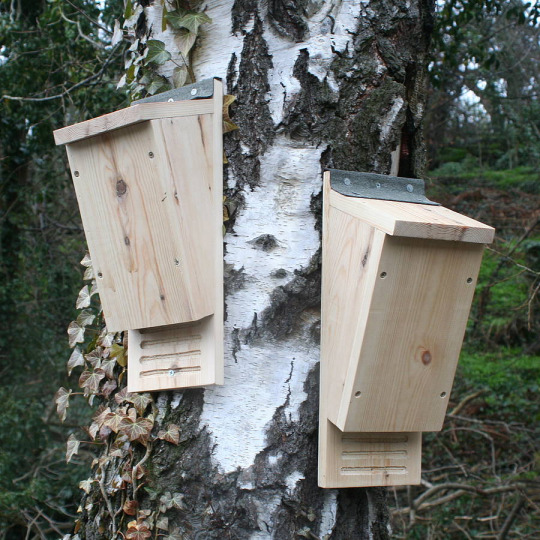
Big or small, whether they support five bats or five hundred, making bat boxes and supporting local bats is a great way to boost biodiversity! Not only will they eat mosquitoes and other pest species, but you may also be able to use the guano (bat droppings) as fertilizer! Do be careful if you choose to do that though--I’ve never had the opportunity to, so do some research into how strong it is and use it accordingly.
Provide Passageway Points
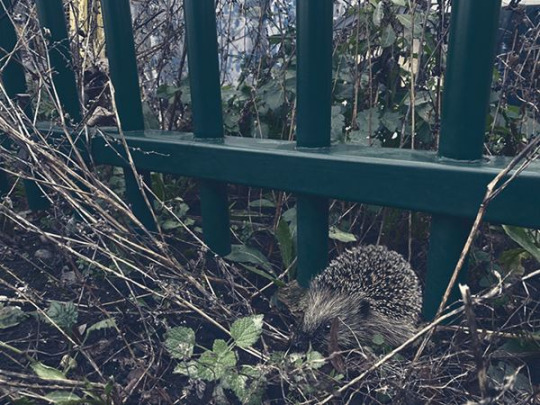
If you want your area to be more accessible for creatures that can’t fly or climb fences, allowing or creating access points can be an excellent way to give them a way in and out. Holes in the bottom of walls or fences can be sheltered with plants to allow animals through.
In a somewhat similar manner, if you’re adding a water fixture, it’s important to provide animals a way to get into and out of the pond--no way in, and they can’t use the water. No way out, and they may drown. Creating a naturalistic ramp out of wood beams or sticks, or stepped platforms out of bricks, stones, or logs can do the trick.
Get or Keep Logs and Brush Piles

I’ve already mentioned logs a good handful of times so far in this post. To be used as access ramps, or as nesting areas for solitary bees. But they have value as much more than that! Logs on the ground provide shelter for all kinds of animals, especially depending on size--anything from mice, reptiles, and amphibians to things like turkey vultures and bears will use fallen logs as shelter. Inside of a decaying log, there’s a lot of humidity, so amphibians are big fans of them--meanwhile, the upper sides of them can be used as sunning platforms by things like lizards. Other animals can also use the insides of logs as nest sites and hiding places from predators too big to fit inside. Fungi, spiders, beetles, termites, ants, grubs, worms, snails, slugs, and likely much more can be found inside rotting logs, using the rotting wood as food sources or nesting places. They can then provide food for mammals, amphibians, reptiles, and birds. They can also be regarded as a landmark or territory marker as wildlife get more familiar with your space.
So how do you get logs for cheap? Try Chip Drop! I talk about them more in a future post, but you can mark saying that you’d like logs in your drop, so they’ll give you any they have! In fact, you may even get a drop faster if you're willing to accept some logs. You may also be able to approach arborists you see working in your area and ask for logs. There may also be local online listings for people selling logs for cheap, or just trying to get rid of them. If there’s land development going on near you, you may be able to snag logs from trees they cut down to make space. Do keep in mind, you don’t need to have huge gigantic logs laying around your property to make an impact--even small logs can help a lot.

If possible, creating and leaving brush piles on the edge of your property can be a great boost to biodiversity--even if you may not see the wildlife using it. They’ll provide shelter from weather and predators, and lower portions are cool and shady for creatures to avoid the hot sun. The upper layers can be used as perch sites and nest sites for song birds, while lower layers are resting sites for amphibians and reptiles, and escape sites for many mammals. As the material decays, they also attract insects, and as such they’ll attract insect-eating animals too. As more small animals find refuse in your brush pile, their predators will be attracted to them as well. Owls, hawks, foxes, and coyotes are known to visit brush piles to hunt. Making a brush pile can be as simple as piling branches and leaves into a mound, as big or as small as you want. You can even use tree stumps or old fence posts near the base, and keep stacking on plant trimmings and fallen branches. Do note that you don’t want to do this near anything like a fire pit.
Don't forget, with all of these, your mileage may vary for any variation of reasons, so don't worry if you can't take all of even any of these actions! Even just talking about them with other people may inspire someone else to put out a bat box, or leave a few logs out for wildlife!
That's the end of this post! My next post is gonna be about ways to get seeds and plants as cheaply as possible. For now, I hope this advice helps! Feel free to reply with any questions, success stories, or anything you think I may have forgotten to add in!
4K notes
·
View notes
Text
ok so instead of going on my usual the earth is doomed spiral I started looking into solar punk solutions and stumbled across the practice of permaculture & found a free 50 video series from the university of oregon on it if anyone else would like to learn abt ways we can actually start restoring earths whole deal
2K notes
·
View notes
Text
Adding To or Starting a Garden
AKA, the beginning of the Plants-Related section of this series.
This is my third post in a series I’ll be making on how to increase biodiversity on a budget! I’m not an expert--just an enthusiast--but I hope something you find here helps!
Got an area of lawn you’d like to convert to a wildlife haven? An area you can stick some hanging baskets in? Want to know how your garden of tomatoes and zucchinis is already putting in a lot of work? This is the section for you!
It would be dumb of me to not acknowledge that the act of gardening can come with a lot of costs. Buying seeds, buying plants, buying soil, raised bed materials, mulch, etc. … it can all get a bit daunting, let’s be honest! But there’s quite a few ways to get seeds and plants for free or extremely cheap, which I’ll be addressing in this section! The next section will be all about addressing the other Costs in gardening and how to mitigate or eliminate them entirely.
Also, do keep in mind; there’s no need to try and convert a whole area from lawn to garden or unused to garden at once. In fact, it could actually be extremely beneficial to do it a little at a time--maybe four or five square feet to start out,
Front Lawn (or Managing Principles)
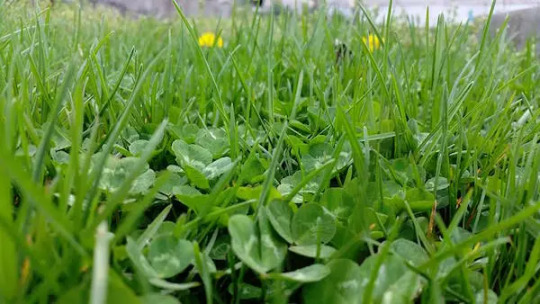
If you live in a place where you’re required to have a grass turf lawn (HOA’s come to mind…), try replacing it with native grasses instead! You could even possibly use a low-growing ground cover plant like clover to a similar effect! Reseeding/replacing an entire lawn can be a big upfront cost, but even just letting the lawn be a little messy and tall helps. If the lawn gets patchy, leave the bare spots for a little while and something different will likely pop up! Pioneer species will fill the gaps and provide benefits to other plants around them, support animals, and more! If you want to take the guesswork out of it, you could always research what the pioneer species are in your area and plant the ones you like most.
Obtaining Seeds for Cheap or Free
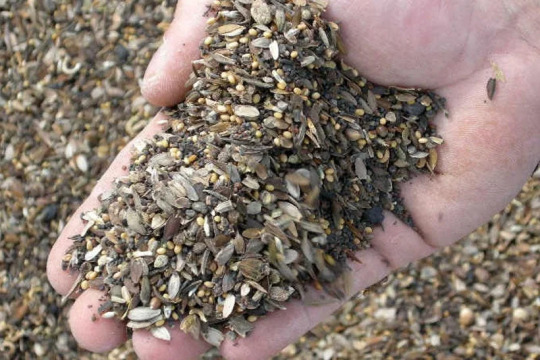
The cheapest way to start a garden is by far via seeds. However, seeds can be a bit complicated to grow, and some sources make them… way overpriced. Fortunately there are ways to get seeds for little to no cost!
Some places sell seeds for as low as a dollar, 50 cents, or 25 cents! The packets may not have a lot of seeds, but it’s definitely a good start for a low budget! I’ve personally bought cheap seed packets at Walmart--the Ferry-Morse and Burpee brands are not what we’re looking for here. Typically the cheaper ones I’ve found are American Seed (which is owned by Green Garden Products, which also owns Ferry-Morse, Livingston Seed, McKenzie Seed, and Seeds of Change. Do with that information what you will), but they’re rarely stocked near the Ferry-Morse ones in the Formal Gardening Section. I’ve most often found them on end caps near the gardening section, so you may have to weave through a few aisles to find them, but once you do there’s an array of flower and vegetable seeds to select from! Alternatively, I’ve found seeds at Dollar Tree sold 2 or 4 for a dollar in Spring as part of their seasonal product; however, when they’re out of stock, they’re typically out of stock for the year. Try to check them out early in the year!
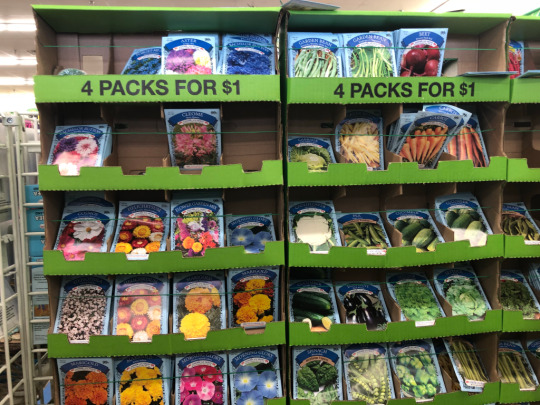
Otherwise, other seed companies like Urban Farmer or Botanical Interests will often have semi-frequent sales in spring and fall, when people are stocking up on seeds--joining their email lists can help you be the first to know when a good sale is going on!
Some foods from grocery stores will provide seeds that you can use in the garden as well. I’ve had the most luck with store-bought bagged beans, peppers, and tomatoes. Some people have had luck with watermelons, apples, citrus, squash, and more. Do keep in mind that you likely won’t get the same variety of fruit/vegetable as the one you bought--the resulting plant may look different and taste different.
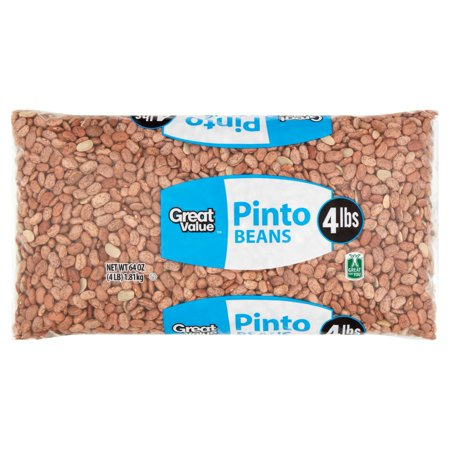
Give it a shot! Pick some beans you like--if they don't grow well, at least you can eat the rest!
If you live in the US, food-producing live plants, bare roots, and seeds can often be purchased with SNAP benefits. But what does growing fruits, veggies, and herbs have to do with boosting biodiversity? While food crops aren’t typically native, they still provide valuable shelter for native insects. Some plants even have intricate relationships with native fauna--like the squash bee, a solitary bee which exclusively pollinates cucurbits like pumpkins, squash, and zucchini. And we get to benefit more directly as well! If you’re planting a diverse range of foods in your garden (as opposed to the swaths of single-plant farms that typically produce what’s sent to grocery stores), you’re supporting high levels of biodiversity by providing a variety of plants for creatures to live and hunt around.
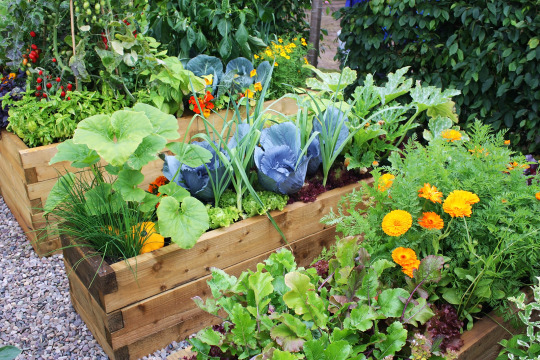
Most of the time, when we think of boosting biodiversity with a garden, we think of a colorful flower garden teeming with pollinator species. However, if we’re striving to use native species, it can be a bit difficult to find some species in stores. I can say from experience that trying to find any wildflower seeds other than butterfly weed, purple coneflowers, and black-eyed-susans is… challenging, if you limit yourself to stores like Walmart, Home Depot, and Lowe’s. You might occasionally get lucky with an ACE Hardware or a local nursery, but even then sometimes it can be hard to track down who in your area is selling what--let alone if you live in an area where no one really is selling native plants or their seeds. Not to mention, even once you find a local or online store selling the seeds you want, they can sometimes cost a pretty penny. So what do you do?
If you have the option to, consider gathering native seeds yourself! Get good at identifying the native flora and fauna--or at least, a few target plants and their lookalikes--and get ready to go! Learn where they tend to grow, when they’ll be seeding, etc. Try to identify the plant before it goes to seed (for most plants, it's easiest to identify when flowering), then check back regularly to gather seeds. Typically, if I want to learn how to collect seed from a specific plant, I just search it on Google or YouTube--oftentimes, I'm lead to the GrowItBuildIt Youtube page, so it may be a helpful resource for you as well! Of course, make sure to leave plenty of seed behind so the wild population can repopulate, and seed can feed other creatures in the area. A good rule of thumb is to take no more than 1/3rd of what's available.

Buying seed in bulk is an option if you can afford the upfront cost. Try teaming up with a few friends to buy some bulk seeds and split them amongst yourselves--you’ll get tons of seed! Prairie Moon is a popular site that'll sell seeds by the pound if you can afford the price--though they're in the US, and I believe they focus on Midwest and East Coast natives.
If you want to cheat the system, don’t buy bulk sunflower seeds--buy bags of sunflower seeds being sold as birdseed. They’re typically all black oil sunflower seeds, but they’ll sprout, and they’re fairly cheap for the amount you get!
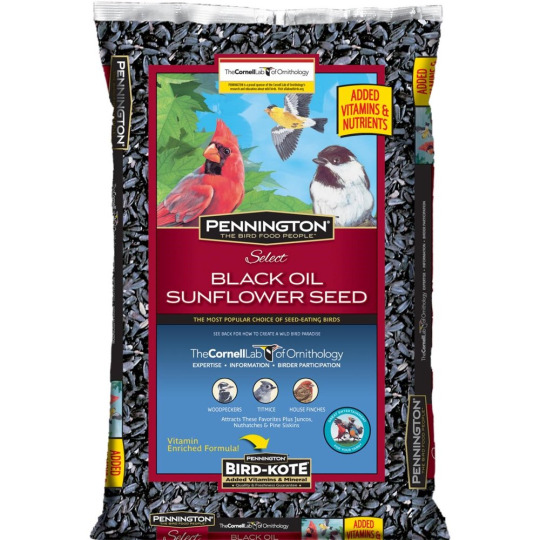
However, beware generic wildflower seed mixes! Many brands like to sell wildflower seed mixes in big box stores like Home Depot, Target, or even Dollar Tree, but they’ll often include flowers that aren’t native or possibly even invasive in your region! Before you make any purchases, double check to make sure the contained seeds won’t do more harm than good! A quality source of native seeds will provide English and Latin names for all seeds included, and will be native to the region or at least non-invasive.

See this? I don't trust this.
There’s a good handful of programs online that’ll send you free seeds if you’re planning to start a native habitat project! Poke around online and see what you can find; you might get lucky! The best time to start looking for these is fall and winter, I find--by early spring, many of them are either done or beginning to wind down... though some also start up in spring. Ultimately--just check regularly! You never know what you can find!
Other Ways to Get Plants
Don’t want to start from seed? That’s fair! You can try cuttings! Just be sure not to take too much of the plant while you do so. Make sure you’ve gotten a few leaf nodes on your cutting, and cut any flowers you may have gotten. Make sure to leave some blooms and foliage on the original plant for the creatures in the current habitat--you don’t want to destroy one habitat to make another in your garden. There’s tons of methods of rooting cuttings, many of which have different efficacy rates for different plants, but that’s a topic for another post.
If you find seedlings growing in a place where they won’t be able to sustain themselves long-term, or are in danger of being destroyed, consider relocating them! You may be able to gently dig up and transplant the seedling to your garden. Don’t do this if they’re in a place where they can easily survive--ideally, you’ll be taking plants from sidewalk cracks, heavily maintained public gardens, roadsides, etc. Do be careful while doing this--ensure your safety first!

You’re totally allowed to join gardening communities like clubs, facebook groups, and more before you’ve even put a trowel to the dirt. These are great places to learn information and advice! Many gardeners are more than happy to help out a new gardener, and will eagerly provide seeds, cuttings, or even baby plants! Talk to some people about your gardening journey and what you’re hoping to do, and you just might find some kindred spirits--or at least get more people interested in the topic!
Seed and plant giveaways and trades happen all the time in gardening clubs, as well as online! Just poke around and see what you can find! Some are explicitly trades, meaning you’re expected to send something in return, but once you get your feet on the ground with some plant knowledge you’ll be stellar! You may be able to explain you’re just starting out, and someone may send you seeds without expecting a trade, but I’d suggest trying giveaways first.

Poke around online and see if there’s a local chapter of your state’s native plant society. From there, you’ll likely be able to find a calendar of events--many of them will host plant sales in the spring, with a bunch of native plant seedlings ripe for the pickings if you can make it out and have some money to spare! Fair warning, though, you’ll want to get there early if you can. If they say they’re starting at 10, try to get there by 9:45. Year after year, there’s always record turnout, and they sell out of plants faster than ever. Just trust me on this. I’ve been let down; hopefully you won’t have to be.
Some libraries are beginning to host seed libraries! Check around and see if your library has one! Ideally, the system works best if you also have seeds to contribute in return, but if you’re just starting out I’m sure they won’t mind you taking some seeds! Just consider saving some seeds to contribute in the future and pay it forward. If your library doesn’t have a seed library? Consider asking if they’d be willing to start one! Community interest is a great way to get the ball rolling on projects like these, but they’ll only know the community is interested if the community tells them they’re interested!
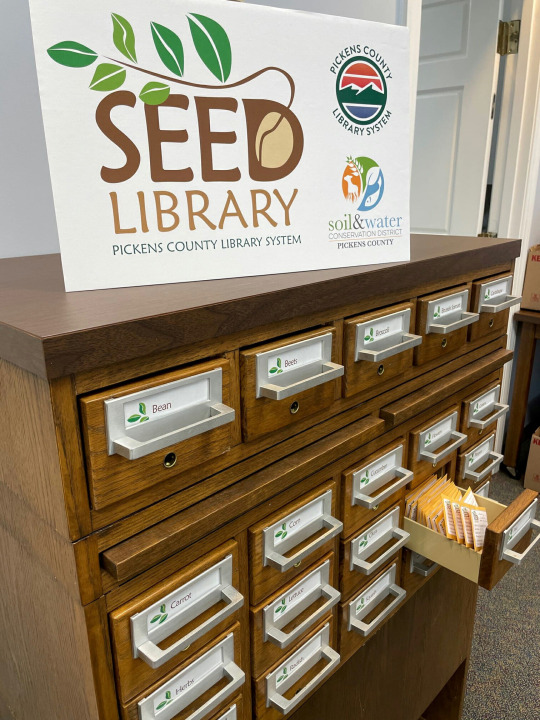
Volunteer to Garden for/with Someone Else
Maybe someone in your area wants to garden, but is struggling to find the time/energy. Many elderly people who used to garden simply can’t anymore but still would like a garden. Other people may love to have a helping hand in their garden. You might even find a few people in your area interested in renting and sharing a community garden plot with others, so they don't have to handle it all on their own! They may be interested in increasing biodiversity right now, or may be willing to if it’s brought up to them. You might be just the kind of person someone needs! Since it won't be your garden, you’ll likely need a bit of permission and collaboration to get anything in particular going, but it’s worth a shot and a way to maybe even make friends!
Again, your mileage may vary with some of these. You may not know where there's a bunch of wildflowers growing in your area, or maybe your local library doesn't have a free seed library. That's okay! Do what you're able to, find what you can find, get what you can get! And there's never any shame with starting small--in fact, starting small can make the project easier to manage and expand when you're able!
That's the end of this post! My next post is gonna be about ways to start growing plants cheaply--low cost seed starting set ups, essentially. There's a lot of good options, many of which I've used myself even! Until then, I hope this advice is helpful! Feel free to reply with any questions, success stories, or anything you think I may have forgotten to add in!
1K notes
·
View notes
Text
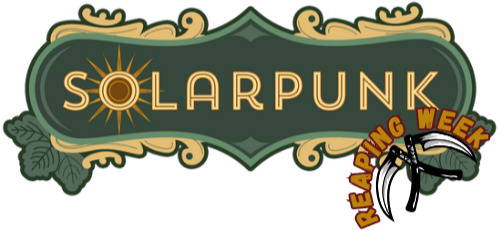
Community gardens-
Community gardens are a piece of land gardened or cultivated by a group of people, which you can do individually or collectively. So they can be done on private or public land.
Community gardens are not only a testament to community care and mutual aid, it's also almost a radical act of protest and activism. You're combining and sharing resources, which is inherently anti-capitalist, and you're actively protesting climate change by cultivating the land and bringing back native plants. They exist in various forms, it can be located in the proximity of neighborhoods or on balconies and rooftops. They are far from a one size fits all, they are built to meet the needs of the people cultivating them.

History-
this is gunna be a long one yall--
1890s-- Rapid urbanization in Europe and North America lead to community ran gardens to supplement food stocks that the city couldn't maintain causing an obscene cost of food. Thus lead to cities across the world attempting in their own ways to handle the problem-
1893 - Detroit Mayor Hazen S. Pingree took office with citizens even calling for “bread or blood”. In the mist of this crisis the city establishes a program that required vacant lots to be used as gardens and farms for the unemployed citizens have access to food. The deal the city basically makes is 'we will provide the land for you to farm, you feed yourself by farming it!' Later called "Potato Patches" would convert thousands of acres of vacant and idle land in the city for subsistence gardens, then cultivated by the unemployed in order to ensure citizens access to food regardless of the employment or economic status. At its peak, 1563 families participating over 430 acres of donated or City land. This would become so successful that later other cities like Boston and Buffalo would later adopt similar programs.
In England, “allotment” gardens were created to improve working-class people’s food provision, living conditions, and overall health of people living in suddenly crowded city centers.
Marseille in 1896, “les jardins d’ouvriers”, or ‘the workers’ gardens’, were created by a clergyman, with the purpose of reducing the misery of the working class and improving living condition.
1917- The War Gardens Commission was established to call on citizens to become, "Soldiers of the soil," planting gardens to meet some of their own domestic need for food as well as solider rations. (talk about abandoning your citizens for the sake of war >.>) Providing booklets, cartoons, and plenty of propaganda to teach everyone able to grow and preserve their own food supplies. War and Victory Gardens running well through the 1920s into the 50s. Often communties would have a vacant lot or shared spaces to also fullfill any need that wouldnt fit on private land. By 1944, between 18 to 20 million families with victory gardens were providing up to 40% of the vegetables in America.
1970s - In major cities that were fighting both economic crisis and urban decay as a result of white flight to the suburbs. Bringing rise to community groups like The Green Guerillas- built of horticulturalists, gardeners, botanists, and planners who work to turn abandoned or empty spaces in New York City into gardens. The group threw "seed grenades" into derelict lots and developed community gardens, often without going through official channels. It became especially popular after the concerted redevelopment of a dangerous, trash-filled space at the corner of Houston Street and Bowery in Manhattan. That first and now oldest recognized community garden in New York City on a street corner, grew to be over an acre and remains active as of 2023 now named the Liz Christy Garden after its founder who wanted a safe space and good food for children in her community.
2010-Current
Millions of community gardens spanning across the entire world have been reestablished. Particularly over the course of 2012 on wards in order to get back to connecting with the soil and feeding low income housing. Many of the gardens today also hold other community functions like yoga and woodworking classes, socializing centers, holding events, and act as a 3rd space where there are so few these days. Becoming more like a community hub over just a simple source of food.

How do I join or create a community garden?
Join an existing garden- look up one in your area here
To create your own, you will need to do your own research on your city or towns bylaws but generally you'll need a few things-
Gather friends/group to garden with
Secure a place to garden, as well as access to water
Gardening Equipment
Happy Gardening!!
Also @solarpunkani this is for you!!!
216 notes
·
View notes
Text
Solarpunk Sunday Suggestion:
Get a library card
968 notes
·
View notes
Note
Hey do you have any tips for making my garden very low maintenance but still productive. I have a large raised bed and a field with very good soil quality but I just don't have the energy to garden all the time. They both get lots of sun.
These tips are mostly focused on reducing the maintenance required in weeding and watering, which are often the two biggest things that gardeners end up doing to maintain gardens. These tips are also fairly general. As always, if you have more specific questions, please feel free to send in another ask with more details!
Mulch is my go-to method to reduce weeding and watering. Putting mulch around your plants helps keep water from evaporating out of the soil and makes it a lot harder for weeds to grow. This doesn't have to be fancy expensive mulch either - lawn clippings or wet newspaper work just fine (and I would argue better than traditional wood chip mulch).
Soaker hoses are a low-effort way to water, especially if your garden is large. Depending on your setup, watering the garden could be as simple as turning on a spigot.
The Ruth Stout method is an entire gardening method that combines mulching and no-dig techniques to grow plants with minimal effort. An overview here.
Grow native plants. They're already adapted to the growing conditions of your area and tend to grow well with little human input. If you're in the US, your local county extension office can help you pick options and possibly source seeds.
Similar to the last point, choose hardy, low-maintenance plants. I'm using vegetable examples here since that's most of what I grow personally: Beans, peppers, greens like lettuce and spinach, summer squashes like zucchini, and many herbs tend to grow perfectly fine if you throw the seeds at dirt and water them occasionally. Potatoes, carrots, onions, and tomatoes either require special soil preparation or tend to need more maintenance and care while growing to deal with pests or disease. Find the overlap between what grows well in your climate and growing season and what doesn't require a lot of maintenance or preparation.
Look into permaculture gardening principles. A running permaculture garden should be fairly low-maintenance, but it can take a lot of energy and effort to get it going, which may not be the best fit for what you need. However, there are a lot of overlapping concepts in permaculture. You may find things you can implement in your garden to reduce how much energy you have to put into it without going full permaculture. One intro here, another here; I'm also a huge fan of Heather Jo Flores and Food Not Lawns as resources.
I hope this helps! Followers, please chime in with any tips you may have.
- Mod J
184 notes
·
View notes